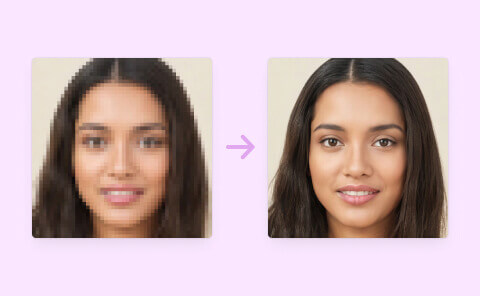The Future of Image Enhancement: Exploring the Power of AI Image Upscaler
Introduction
In the digital age, visual content plays a crucial role in various industries such as media, advertising, e-commerce, and entertainment. With advancements in technology, the demand for high-quality images has skyrocketed. from overscale However, capturing or obtaining high-resolution images isn’t always possible, leading to a need for effective image enhancement techniques. In recent years, the development of artificial intelligence (AI) image upscalers has revolutionized the way we enhance and improve the quality of images. In this article, we will delve into the future of image enhancement and explore the remarkable capabilities of AI image upscalers.
Understanding AI Image Upscaling
Image upscaling refers to the process of increasing the size or resolution of an image. Traditionally, upscaling techniques relied on simple interpolation algorithms, which often resulted in blurry and pixelated images with a loss of detail. However, the emergence of AI-powered image upscalers has dramatically changed this landscape.
AI image upscalers utilize deep learning algorithms, particularly convolutional neural networks (CNNs), to analyze and understand the content of an image. These sophisticated models have been trained on vast amounts of data and have acquired the ability to learn the intricate patterns and features that define high-resolution images. By leveraging this knowledge, AI upscalers can intelligently predict and generate missing details in low-resolution images, resulting in a significant improvement in their quality.
The Power of AI Image Upscalers
- Enhanced Image Resolution: AI image upscalers excel at increasing the resolution of images while maintaining fine details and sharpness. Unlike traditional upscaling methods, which often introduce artifacts and blur, AI algorithms can generate realistic high-resolution images that closely resemble their original counterparts.
- Noise Reduction and Artifact Removal: Low-quality images often suffer from noise, compression artifacts, or other imperfections. AI upscalers can effectively reduce noise, suppress artifacts, and enhance the overall visual quality of images, resulting in cleaner and more visually appealing outputs.
- Texture and Detail Enhancement: AI upscalers have the remarkable ability to add missing texture and enhance fine details in low-resolution images. By learning from vast image datasets, these models can accurately infer the intricate patterns and textures that are typically lost in low-resolution images, resulting in a visually pleasing enhancement.
- Preservation of Visual Consistency: One of the critical challenges in upscaling is maintaining the consistency of the image style and preserving the original artistic intent. AI image upscalers strive to retain the style and visual characteristics of the input image during the upscaling process, ensuring that the enhanced image remains faithful to the original content.
Applications and Future Implications
The applications of AI image upscalers are vast and varied, ranging from professional photography to consumer applications. Here are some of the areas where AI upscaling techniques are making a significant impact:
- Photography and Printing Industry: Professional photographers and printing services can leverage AI upscalers to enhance the quality and resolution of their images, resulting in crisper prints and greater attention to detail.
- Video and Film Restoration: AI upscalers are becoming indispensable in the restoration of old or low-resolution films and videos. By upscaling each frame, preserving details, and reducing noise, AI algorithms can breathe new life into classic films or archived footage.
- Virtual and Augmented Reality: High-resolution images are vital for creating immersive experiences in virtual and augmented reality applications. AI image upscalers can generate sharper textures and enhance the overall visual fidelity, enhancing the realism and quality of virtual worlds.
- E-commerce and Advertising: AI upscaling techniques can significantly enhance the product images used in e-commerce platforms, allowing customers to examine products with greater detail and accuracy. Additionally, advertisers can use AI upscalers to improve the visual appeal of their campaigns, leading to higher engagement and conversion rates.
The future implications of AI image upscalers are exciting. As technology advances, we can expect even more powerful AI models capable of enhancing images beyond our current capabilities. Moreover, with the proliferation of edge computing and faster hardware, the real-time application of AI upscaling techniques will become more accessible, enabling on-the-fly enhancement of images and videos.
Conclusion
The advent of AI image upscalers has revolutionized the field of image enhancement. These powerful algorithms can effectively upscale images, increase resolution, reduce noise, and enhance details, surpassing the limitations of traditional upscaling methods. As AI continues to evolve, we can anticipate even more impressive advancements in image enhancement techniques, leading to visually stunning and realistic results. With widespread applications in various industries, AI image upscalers are set to shape the future of visual content and provide us with enhanced visual experiences like never before.
To use Ai Image Upscaler to Upscale image online free from here







